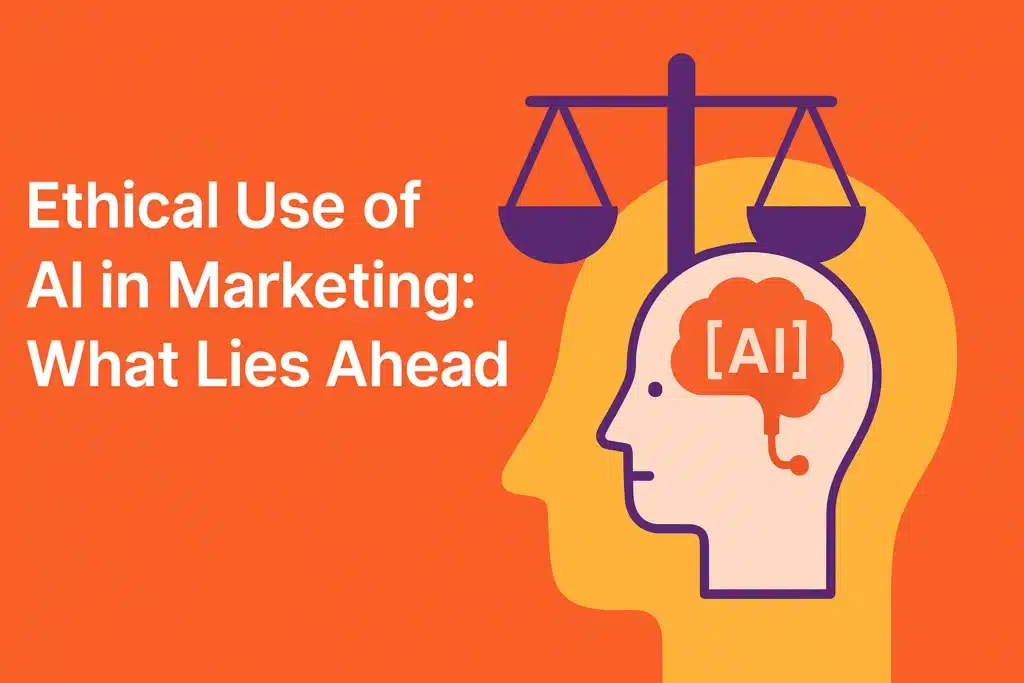Marketers want to stay current with new trends yet still avoid ethical pitfalls. AI offers speed and scale, but many wonder if it replaces genuine creativity or compromises trust. In practice, it can complement human expertise when guided by reliable rules. This middle ground upholds trust while delivering results. The sections below examine how AI-driven practices shape marketing’s future and emphasize methods that keep new ideas fair for all.
AI content marketing is entering a new accountability era
Marketers now see AI content marketing going beyond basic speed. Audiences expect honesty in each campaign, including data compliance and brand values. This shift raises fresh demands for ownership. Rather than letting AI run unchecked, teams must clarify structures that protect consumers and maintain brand trust. Today, this new era prompts marketing experts to mix openness with innovation, making sure fair outcomes for everyone involved.
Ethical use of AI in marketing starts with transparent methods
Transparent policies build trust. Marketers label AI-generated outputs, disclose data usage, and respect copyright. A 2024 report states that half of marketing teams expect major output gains from AI, but undisclosed usage has led to lawsuits worth millions [Digital Marketing Institute]. These findings show how clear messaging benefits both businesses and consumers, further reducing legal risks and building genuine marketing connections and brand standing.
How data biases impact trust and future AI content output
Training data shapes AI output. If data skews toward specific groups, marketers risk unfair results. One report shows that three quarters of AI leaders feel confident about fairness, yet bias incidents continue [Deloitte Insights]. A documented example involved an AI hiring model that disfavored applicants. Trust collapses if unfairness appears, harming brand loyalty and future adoption. Marketers must demand data to prevent negative outcomes.
Why human fact-checking is key to AI-assisted content accuracy
Machines may seem impartial, but factual errors still remain. Recent research shows that AI-driven fact-checking improves belief correction across different political groups ([New Media & Society]()). Yet humans often catch subtle mistakes that machine-run tools miss. AI can detect claims, but human reviewers confirm context. This extra layer limits misleading content and protects honesty in marketing materials. Readers trust verification steps.
Best practices for AI assisted content are evolving fast
Best practices for AI assisted content focus on clarity, safety, and brand alignment. Marketers combine machines with active supervision to guarantee accuracy. They adopt clear guidelines that describe data usage, allowed AI tasks, and consistent message tone. As new tools appear, ethical standards adapt. This framework requires teamwork between tech teams, legal counsel, and creators to maintain dependable AI-driven copy that benefits end users.
Set clear boundaries between human and AI-written content
Marketers often blend machine-run text with human edits. However, 58% rely on AI tools for creation ([Outranking](https://www.outranking.io/blog/originality-in-ai-generated-content-best-practices)). Clear labeling assures readers which segments are machine-produced. This difference preserves realness and saves audiences from confusion. Tools detect repeated phrasing or formal patterns common in AI, pushing teams to include brand voice. By defining roles, teams keep messages personal and consistent. This fosters trust and clarity.
Train AI on brand-safe data to avoid messaging inaccuracies
Companies need brand-safe data sets to preserve correct messaging. One publication warns about employees adopting unapproved AI tools, creating risks of private leaks [Kontent.ai]. Training AI on licensed, relevant data helps clarify tone and compliance. Unvetted assets might produce misleading statements or breach copyrights. Complete oversight ensures that generated text stays matched with brand principles, avoiding awkward or uneven promotions and protecting trust overall.
Use version tracking and logs to audit AI-generated outputs (64 words)
Continuous repeat defines AI development. Teams use version tracking software to compare old and new model outputs [LaunchDarkly]. If a fresh update worsens performance, they revert quickly. Logs store prompt variations, ensuring compliance with brand guidelines. This practice saves time and reduces guesswork, mainly when scaling. Clear audits also help controlled industries maintain confidence in every AI-driven release without sacrificing quality or openness.
Future of joining AI with marketing analytics is smarter
Marketers who use joining AI with marketing analytics access custom and stronger campaign results. They link customer data with AI tools that study behaviors and preferences. Predictive models assess patterns, showing opportunities for real-time engagement. This method removes guesswork while improving brand messaging. As businesses gather more user data, AI-based analytics adjust approaches faster, meeting changing demands and improving marketing strategies with less effort.
Connecting AI to customer journey data will personalize assets
Linking AI to each stage of the customer path helps produce custom offers. Marketers tag actions, such as browsing or cart abandonment, then feed findings into AI solutions. This allows targeted campaigns that match a user’s interests. The trick is to keep data hygiene. If signals are disorganized or incomplete, custom suffers. A single, AI-driven view produces relevant messages and fosters higher engagement overall.
Real-time study will improve the timing of content triggers
AI-driven study follows audience activity at high speed. One provider cites a 30% jump in marketing team output, thanks to machine-run data review [Improvado]. This real-time approach identifies patterns quickly and activates content exactly when users engage, boosting click-through rates and conversions. Voice search data further improves these triggers if joined properly. Marketers then improve timing and reduce delays, leading to more effective campaigns.
AI-assisted insights will adjust campaigns dynamically at scale
Many marketers rely on AI-assisted insights for active campaign updates. One report notes faster AI adoption among experts who now run custom promotions in seconds [Harvard Division of Continuing Education]()). AI refines targeting by studying interactions, then recommends next steps without pausing. This real-time flexibility allows teams to pivot budgets, refine messaging, or shift channels, delivering stronger results across diverse platforms with little human supervision.
AI and SEO content joining will reshape rankings
AI and SEO content joining centers on topic coverage, user intent, and technical performance. Search engines prioritize relevant results that address real questions. Marketers pair machine-run study with editing judgment, improving pages for clarity and trust signals. This teamwork can improve domain authority while spotting emerging trends. As engines evolve, AI-based strategies must adapt to algorithmic shifts, ensuring visibility across organic and voice searches.
Search algorithms may detect quality through human oversight
Leading platforms now use AI-driven techniques to rank pages, but human reviewers still measure content quality. Interesting text, quick loading, and complete coverage influence visibility in many niches. AI tools like RankBrain or BERT understand context instead of focusing on raw keywords. Meanwhile, manual checks fight spam and confirm realness. Writers rely on organized material and trustworthy sources to meet these evolving standards.
Semantic search will shift AI focus toward topic expertise (64 words)
Semantic search emphasizes meaning over terms. Rather than matching single keywords, engines identify themes across entire pages. This shift drives AI systems to develop more thorough context. Marketers focus on content clusters that cover each angle of a subject. Effective link structures and resources strengthen power. AI solutions then interpret these clusters, enabling content to rank for related phrases and remain relevant as queries evolve.
Marketers must tailor AI use to Google’s evolving EEAT standards
Google’s EEAT guidelines highlight experience, expertise, power, and trust. Marketers must shape AI-driven content that matches these benchmarks. Clear attributions, credible sources, and brand voice build realness. Over-machines can weaken experience or honesty, risking lower rankings. Teams include authorship details, examples, and consistent brand style to signal trust. AI tools assist with research, but human insight cements trust. This approach protects long-term SEO performance.
Conclusion
AI’s role in marketing continues to expand, pushing experts to combine ideas with ownership. Ethical guidelines and complete audits reduce risks linked to biased data and unchecked sources. Marketers who combine human checks with automated processes offer transparent, trustworthy campaigns. The future is not about letting machines run on autopilot but about managing AI-driven strategies with focus. Data tracking, version control, and advanced analytics set the stage for real-time insights that increase ROI. Emphasizing brand-safe content, consistent disclaimers, and timely updates can help maintain credibility. As technology grows, these safeguards shape a fair environment where AI content marketing meets valid consumer needs and encourages real brand ownership.
FAQs

Ridam Khare is an SEO strategist with 7+ years of experience specializing in AI-driven content creation. He helps businesses scale high-quality blogs that rank, engage, and convert.



